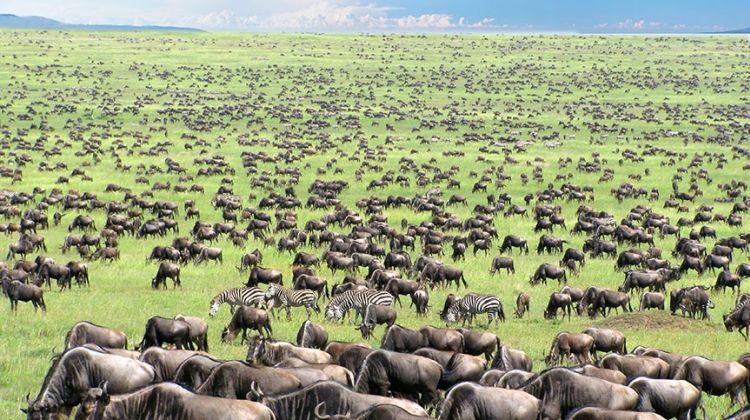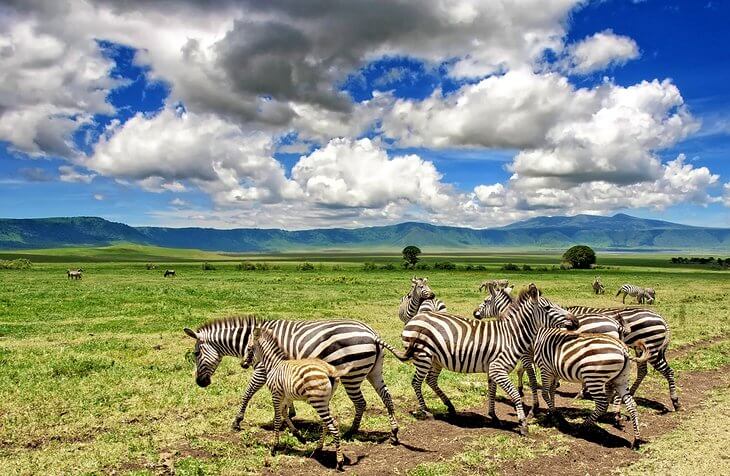Best time for safari in Tanzania:
If you’re not worried about catching migration, the best time to go on a safari (whether you’re heading to parks in the north or south) is during the long dry season. From June to October, a lack of rain means the animals are forced to congregate in pools of water – making them much easier to spot. The foliage is less dense, too, which also helps. The weather is generally cooler and less humid (which is a major plus if you plan to spend many hours in the bush), and the roads are likely to be impassable due to flooding. From a health perspective, the dry season is a better choice because mosquitoes carrying the disease are also less common.
However, the Northern Circuit reserves such as Ngorongoro, Serengeti, and Lake Manyara usually offer good game viewing all year round (with the exception of Tarangire National Park, which is noticeably better during the long dry season).
Catching the Great Migration:


In this stunning landscape, you can see the annual migration of about two million zebras and zebras between the grazing lands of Tanzania and Kenya.
While the weather usually makes for the best time to go on safari, those traveling specifically to see the migrations will need to follow slightly different rules. If you want to witness the calving season of wild animals, visit the northern parks such as the Serengeti and the Ngorongoro Conservation Area between December and March.
In April and May heavy rains make it difficult to follow the herds as they begin their long journey to the northwest – so try to avoid booking a safari at this time. To see herds in action, head to the western Serengeti in June and July.


Leave a Reply